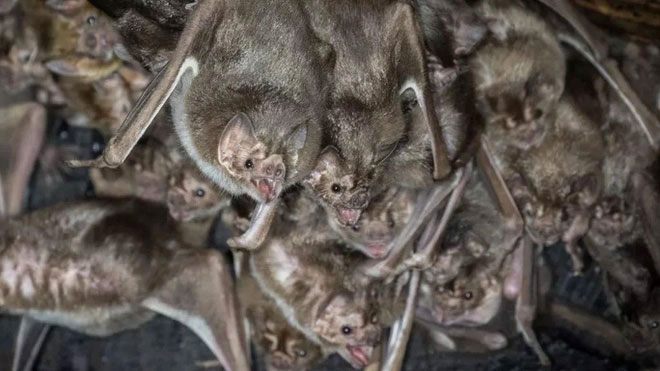Blood typically does not provide enough nutrients for a creature to survive in a Dracula-like vampire manner, except for one species, thanks to 13 “missing” genes.
The most famous vampire – Count Dracula – is depicted with characteristics of vampire bats; conversely, vampire bats possess unique traits that only they and the aforementioned legendary character share: they can survive solely by consuming blood.

Vampire Bat – (Photo: Pedro Ferreira do Amaral).
According to The Scientist, other bat species around the world, including most blood-feeding bats, have a fairly diverse diet because blood cannot provide all the necessary nutrients for a living organism.
However, research led by Dr. Michael Hiller from the LOEWE Center for Translational Biodiversity Genomics (Germany) found that Desmodus rotundus, the vampire bat, lacks functional copies of 13 genes that are present in other bat species.
These genes are completely “missing” from their bodies, or they contain so many mutations that they cannot produce functional proteins similar to those in other bat species. This deficiency for the “real-life vampire” turns out to be an advantage.
According to Live Science, this particular gene defect allows vampire bats to extract certain nutrients from blood in ways that other bat species cannot. For example, two of the missing genes regulate insulin secretion (a hormone that controls blood sugar levels) from the pancreas, resulting in very little insulin being produced, allowing them to “thrive” even when the blood contains very few carbohydrates – a primary source of glucose that other organisms require in larger amounts for energy.
Moreover, the deficiency of the REP15 gene enables iron in the blood of vampire bats to be easily expelled from their bodies rather than absorbed, preventing metal toxicity even when consuming excessive amounts of blood. The absence of another gene called CTRL helps them utilize blood proteins more efficiently…
The authors further noted that some missing genes are related to digestion and metabolism, while others are associated with cognitive abilities, vision, and physiology…, warranting further study. Clearly, the vampire bat’s body has been “designed” to function as an energy-consuming machine in a way entirely different from any other organism on Earth.


















































